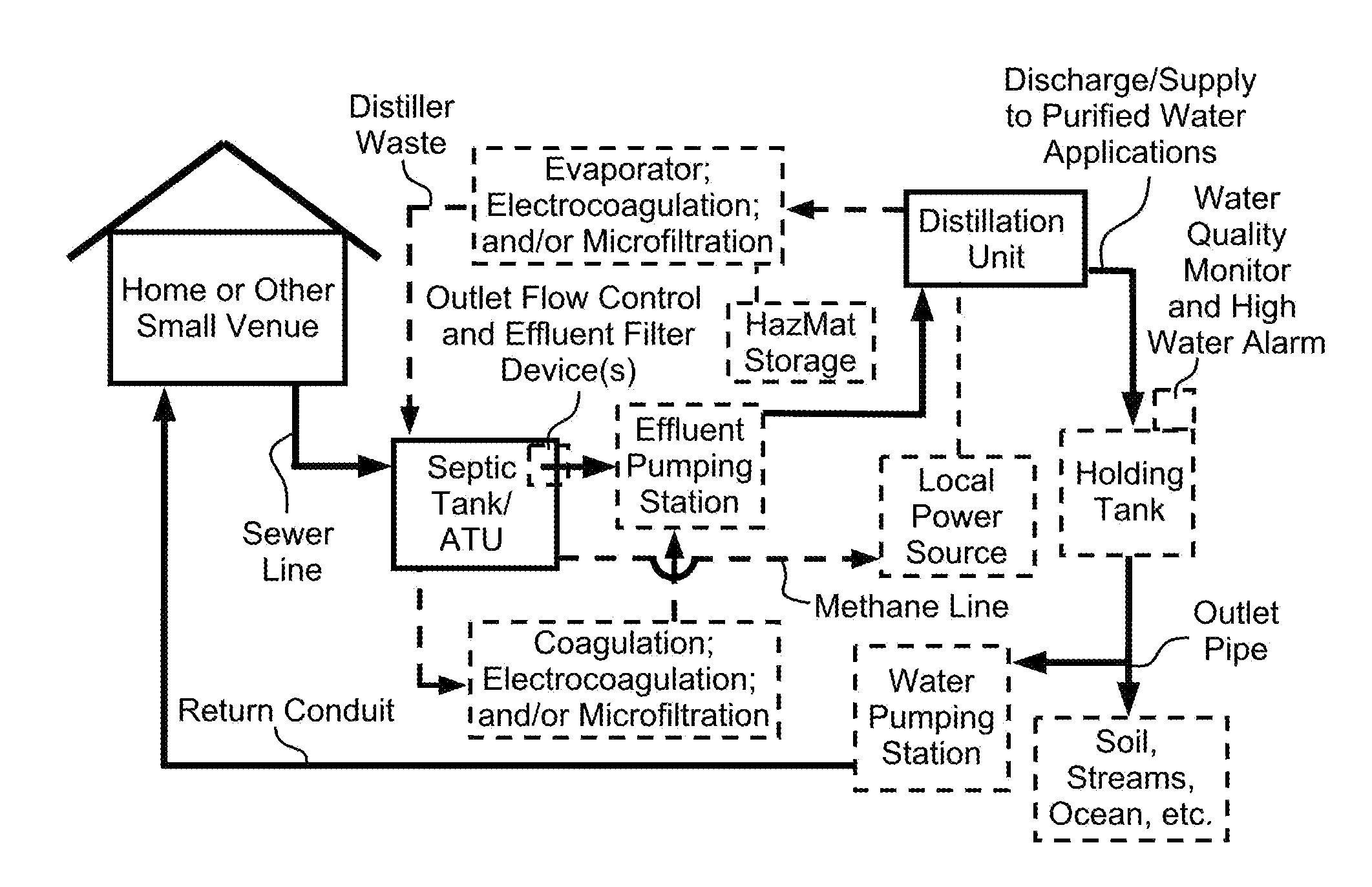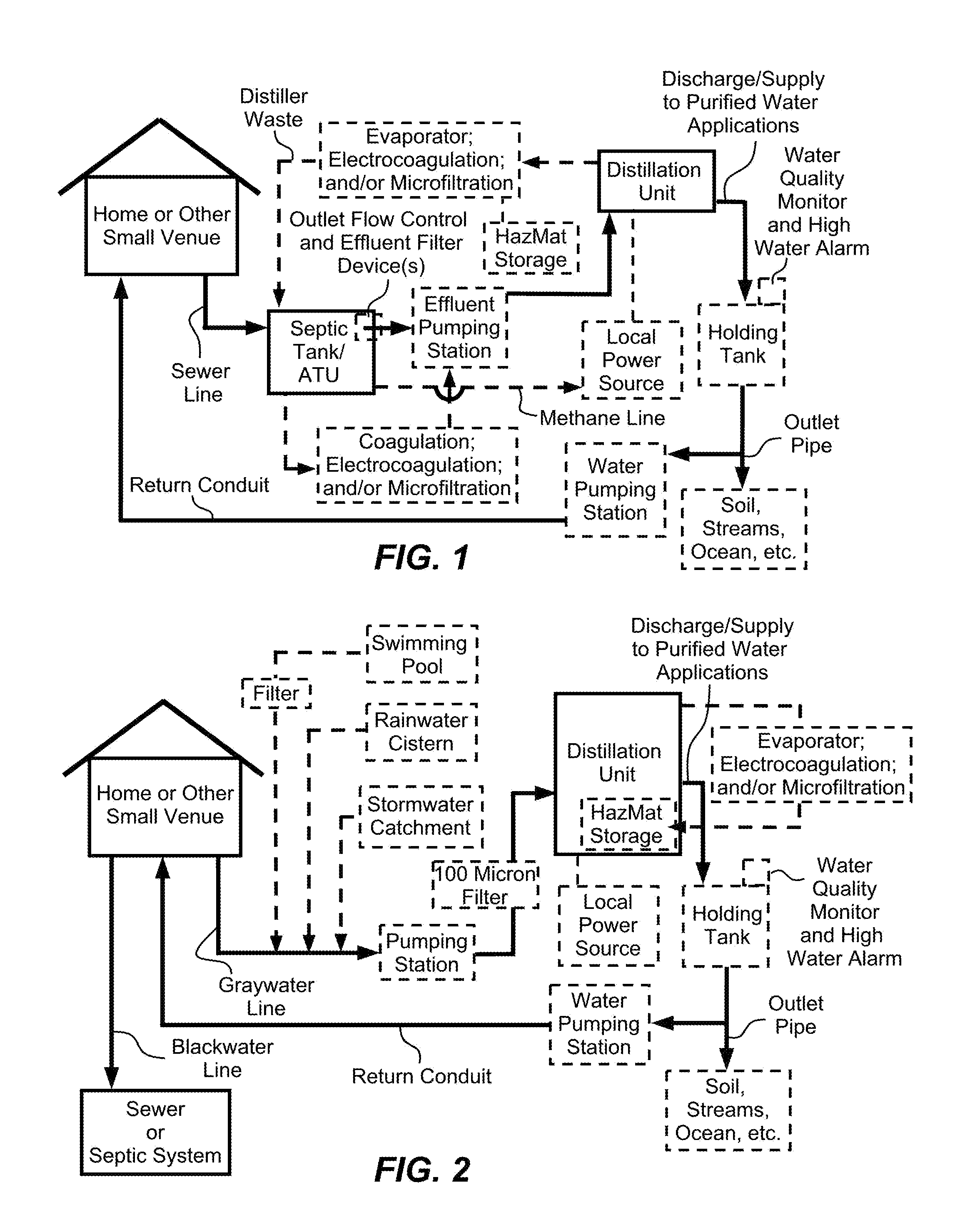System and method of purifying and recycling or discharging septic tank effluent, graywater, rainwater and stormwater
- Summary
- Abstract
- Description
- Claims
- Application Information
AI Technical Summary
Benefits of technology
Problems solved by technology
Method used
Image
Examples
Embodiment Construction
[0032]In order to facilitate the description of the invention, certain terms are defined below.
[0033]A clarifier is any vessel where a clarification process is conducted and consists of temporarily holding the sewage in a tank where heavy solids can settle to the bottom while oil, grease and lighter solids float to the surface. The clarifier allows for the settled and floating materials to be removed and the remaining liquid to be discharged or subjected to secondary treatment.
[0034]Coagulation is process employed to separate suspended solids from water. Finely dispersed solids (colloids) suspended in wastewaters are stabilized by negative electric charges on their surfaces, causing them to repel each other. Since this prevents these charged particles from colliding to form larger masses, called flocs, they do not settle. To assist in the removal of colloidal particles from suspension, chemical coagulation and sometimes flocculation are required. These processes, usually done in seq...
PUM
 Login to View More
Login to View More Abstract
Description
Claims
Application Information
 Login to View More
Login to View More - R&D
- Intellectual Property
- Life Sciences
- Materials
- Tech Scout
- Unparalleled Data Quality
- Higher Quality Content
- 60% Fewer Hallucinations
Browse by: Latest US Patents, China's latest patents, Technical Efficacy Thesaurus, Application Domain, Technology Topic, Popular Technical Reports.
© 2025 PatSnap. All rights reserved.Legal|Privacy policy|Modern Slavery Act Transparency Statement|Sitemap|About US| Contact US: help@patsnap.com


